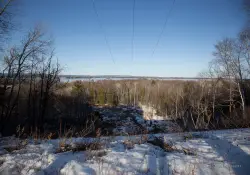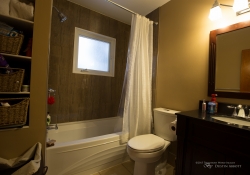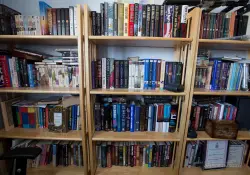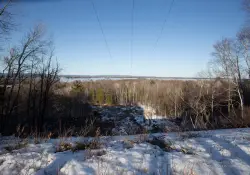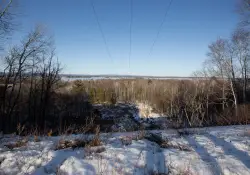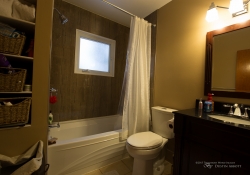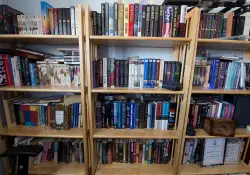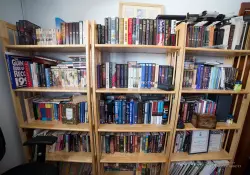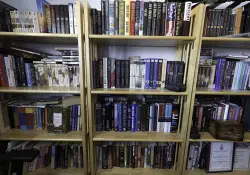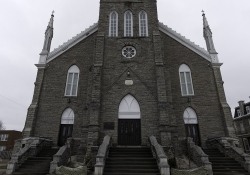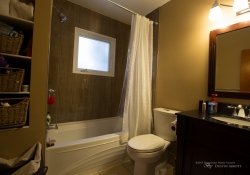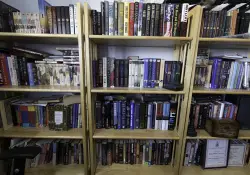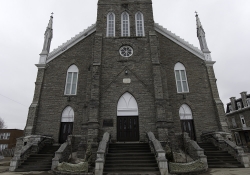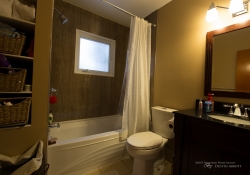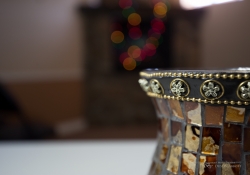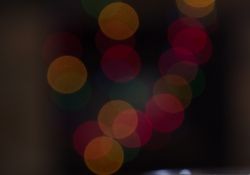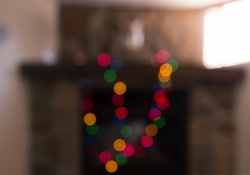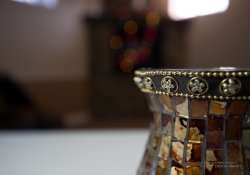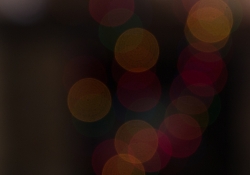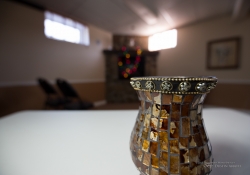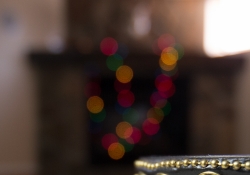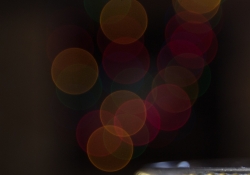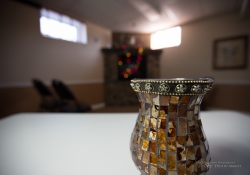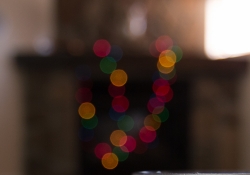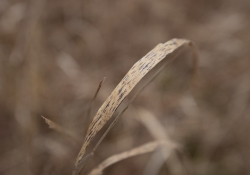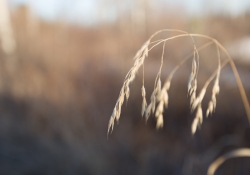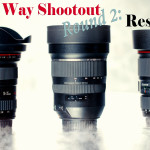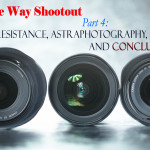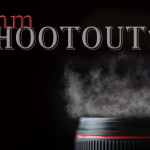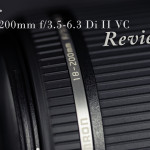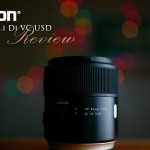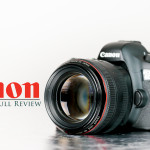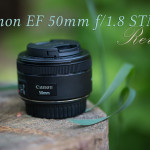Our time with these three lenses has certainly demonstrated how far development has come in the past few years in the wide angle zoom department. Our comparison of these three lenses has certainly favored the newer Canon EF 16-35mm f/4L IS along with the Tamron SP 15-30mm f/2.8 Di VC USD, but this week’s comparison series will further complicate matters a bit by demonstrating at least one area where the older Canon 16-35mm f/2.8L II beats out the newer competitors. In this episode of our three way shootout we will be examining three aspects of these wide angle lenses: angle of view, distortion, and bokeh.
Angle of View
The first two points of comparison are somewhat related, as the angle of view is only one part of the equation. A lens can have a wide angle of view on paper but that angle of view can be less than useful if there is a tremendous amount of distortion, particularly that distortion that corrupts image quality along the edges of the frame. I would suggest watching the first two minutes of the video below to see an interactive look at the comparative angle of view for our lens candidates.
Our results show that the Rokinon 14mm f/2.8 blows other lenses away in terms of absolute angle of view. Every millimeter on the wide end makes a huge difference in the angle of view. The Rokinon’s 14mm focal length produces a field of view of 115.7 degrees (WOW!), while the Tamron’s 15mm produces a field of view of a slightly more modest 110 degrees. The Canon 16-35 frames at about 108 degrees while the Nikkor 14-24 actually frames at 114 degrees (as done Canon’s own 14L lens). Just for kicks: the Zeiss 15mm also frames at 110 degrees just like the Tamron, so the exception to the rule here is the Rokinon, which frames noticeably wider than all other options. But this comparison also shows that there is more at play here than the numbers.
I recognize that for most prospective buyers, this comparison is really about the Tamron 15-30 VC vs. the Canon 16-35mm f/4L IS – so let’s first look at side by side comparisons of the angle of view of these lens at close distance (about 3 1/2 feet from a bookshelf), in a tight architectural space (a bathroom), and then at landscape distance.
The difference in angle of view is relatively modest, but noticeable in every setting. My feeling is that matters less for most landscape photographers (stepping back an additional 5-10 feet is often possible), but will make more of a difference to those of you who are considering shooting interiors or events.
Here is a series from each of the four lenses in this setting:
Canon 16-35mm f/4L IS USM
Canon 16-35mm f/2.8L II
Tamron SP 15-30mm f/2.8 VC USD
Rokinon 14mm f/2.8
The Rokinon has a massive angle of view, but has an equally massive amount of distortion that means that it will not be a natural choice for most people that are looking to do architectural or interior work. As a manual focus only lens (with a very imprecise focus ring) the number of people that will want to use it for event work is negligible. It is a great budget landscape and astraphotography lens, but isn’t a serious part of our considerations.
It is interesting to note that the two Canons do not frame identically at close distance (although they frame almost identically near infinity). The older f/2.8L II frames a bit wider than the new f/4L IS, but it is only a minute difference.
The Tamron’s advantage on paper seems relatively small (2 degrees), but we see that this makes a noticeable difference in framing both in tight spaces and in the field. Of perhaps greater significance is that it achieves this while producing a very modest amount of distortion (the lowest of our trio). As we will see in our next segment, the combination of these elements further extends its advantage in this area.
Of our three contenders, the Tamron wins the angle of view war on the wide end by a fair margin. Some have suggested that it isn’t as wide as the focal length suggests, but my tests show that it is clearly wider by an appropriate margin than either of the Canons. The Rokinon is an anomaly; it frames wider than other 14mm lenses both on paper and in practice.
There is one other point to consider, however, and that is the Tamron sacrifices 5mm on the other end (30 vs. 35mm). This produces a slightly lower maximum magnification figure than the other two lenses. Every photographer has their own purpose in mind for using these lenses, so you need to consider what is more important to you – more on the wide end or more on the telephoto end. I own both a 24-70mm f/2.8 zoom and a 35mm prime, so I personally prefer the wider focal length of the Tamron – it adds something that my other lenses aren’t replicating.
Distortion
We have already noted that the Rokinon represents the extreme end of the spectrum when it comes to distortion. It’s distortion is the most difficult to correct for. None of our three main contestants have a particularly difficult distortion pattern to correct for, but they all exhibit some barrel distortion (as is extremely common with wide angle lenses). I read this evening with interest that LensTip reported a higher degree of distortion for the Tamron than the f/4L IS, which does not reconcile with my findings at all. Photozone’s test show just slightly more distortion for the f/4L than the older f/2.8L (they have not tested the Tamron yet). There is variation in these sites in their reporting on the older lenses, which surprised me. That being said, I must work with the evidence in front of me, and my tests show the Tamron exhibiting much less barrel distortion in real usage…and that seems to reconcile with what the profiles created by Adobe show.
Start watching at the 1:55 minute mark for the section on distortion. It is easier to visualize these differences in the interactive format shown in the video.
If you look at these before/after photos you will see that there is certainly more barrel distortion that needs correcting with both of the Canon options than what is apparent with the Tamron.
Tamron SP 15-30mm f/2.8 Di VC USD
Canon EF 16-35mm f/2.8L II and Rokinon 14mm f/2.8
In fact, even though a profile in ACR (Adobe Camera Raw) for the Tamron now exists and will certainly be in the next build of Lightroom (rumored to be announced this week), I find that it makes so little (apparent) correction to the image that I wonder whether it is worth using it. I have taken multiple images into Photoshop, applied the correction, and then decided that I prefer the original and remove the correction. I certainly am not doing that with the images from the Canon 16-35mm f/4L IS. This is not to suggest that distortion from that lens is particularly bad (it is not) but the nature of the distortion is that it is apparent to my eye. I don’t see a lot of distortion in the images from Tamron and feel that the profile lops off some of the image without a whole lot to show for it. There’s too much give and not enough take.
I’ve given you visual evidence to judge for yourself, but my own conclusion is that the Tamron exhibits less barrel distortion on the wide end than either of the Canon options. I can’t really give you an answer as to why other sites report otherwise, but I will say this: I have noted that sometimes third party lenses sometimes receive more criticism than first party options. I also have the advantage in this situation of comparing these lenses side by side rather than in a vacuum. Head to head comparisons sometimes reveal surprising things, as does field testing as compared to just shooting charts.
Bokeh
I recognize that bokeh is probably not a top priority for many people in a wide angle lens (this is hardly a strength for them), but I have been pleasantly surprised with a number of wide angle options. Furthermore, this type of lens (particularly the f/2.8 variant) is not only used by landscape photographers but frequently by event and wedding photographers, and there are certainly occasions that getting close to the subject and throwing the background out of focus can create unique and beautiful images. (If you would like to understand the concept and purpose of bokeh more, visit this excellent article by PHLEARN).
Start watching at the 4:50 minute mark for the section on bokeh:
Let’s first take these lenses one at a time, starting with the Canon 16-35mm f/4L IS:
The Canon is at a disadvantage in bokeh situations because it has an aperture that is only half the size of the two f/2.8 variations. Despite that, however, a nice maximum magnification figure (.23x – the highest of the trio) means that there are situations where it can produce some bokeh highlights despite its f/4 maximum aperture. This will happen when you get close to your subject and have a little separation from the background. When shot in identical situations to the other lenses the f/4L IS does produce “busier” backgrounds due to the smaller aperture. It can’t overcome physics. There are two knocks on the “Christmas light” highlight performance: 1) There is a definitely a hard line around the inside outer edge of the bokeh circles that draws the eyes and 2) the bokeh highlights become somewhat “lemon” shaped towards the edge of the frame in a way the other two lenses don’t. Not quite “cat eye”, but definitely not round, either. The wide end bokeh gets more busy and less attractive, but don’t expect anything impressive from any of these lenses at 15/16mm when it comes to bokeh highlights. Physics, and all that…
Next, let’s take a look at the Tamron 15-30 VC:
The Tamron benefits from having a large f/2.8 aperture, but suffers a bit in this type of test due to have a shorter maximum focal length compared to the other two (30mm vs. 35mm) and a resulting lower maximum magnification (.20x). This diminishes its advantage somewhat in the size and softness of the bokeh highlights as compared to the f/4L IS. That advantage would be a bit more pronounced were the framing identical. The performance here reminds me a bit of the Tamron 24-70 VC – the highlights are a bit…busy. There are some inner concentric lines that are often referred to as “onion bokeh”. It doesn’t have the hard edge of the f/4L IS, but it produces the busiest bokeh highlights of the three and also will display a random “dot” here and there in the bokeh. This performance actually surprised me, as I felt in field use (much like the 24-70 VC) that the bokeh was quite nice, particularly in the transition zone between focus and defocus. The wide end bokeh remains busy, but is a bit softer than that of the f/4L IS because of the larger aperture.
I’ve saved the best for last. We will now look at the Canon 16-35mm f/2.8L II:
The Canon has long been a staple of event and wedding photographers, and while it suffers in comparison to the other lenses when it comes to absolute sharpness and corner performance, it is a real winner in this kind of situation. Its maximum magnification is only a fraction lower than the f/4L IS (.22x). More importantly, the bokeh is shockingly beautiful for such a lens at 35mm, with big, soft bokeh highlights that completely lack any hard edges or visual noise inside. They stay beautifully round right up the edge of the frame. It puts the other two lenses to shame with this performance. The lens sacrifices some sharpness and contrast to the other lenses, but much like, say, a Zeiss Planar T* 1.4/50mm it makes up for it with nice drawing and rendering of out of focus areas. This is a great performance! The wide end isn’t as visually impressive for a number of reasons, but is still the best performance of the three.
Field Use:
The test above is a very specific and unique one that is rarely duplicated in field use. I have encountered issues with the onion bokeh issue on the Tamron 24-70 VC less than a handful of times despite taking well over 10,000 shots with it in a huge variety of circumstances and taking it to multiple countries. It is a factor to consider, yes, but hardly the most important one.
Field use tells me that all of these lenses will produce nice results near minimum focus. They all have useful maximum magnification figures and are nice performers in the field. Still, this is one area where the older Canon gets the win. Here are some field results in the same order as above: f/4L IS, 15-30 VC, and f/2.8L II. Some shots will give you a direct field comparison between two of the lenses. There are fewer samples from the f/2.8L II because I concentrated more on comparing the two main players here. Hovering over the thumbnails will tell which of the lenses is in use.
Conclusions
All three of these lenses have strengths and weakness. The Tamron SP 15-30mm f/2.8 Di VC USD pulled off a win when it comes to the angle of view (expected) and distortion (unexpected). The Canon EF 16-35mm f/2.8L II turned in a shockingly good performance in our bokeh comparison. The Canon EF 16-35mm f/4L IS had no outright wins in this week’s comparison, but has already demonstrated that it is an exceptional all around performer that really lacks any kind of glaring weakness (f/4 aperture aside). The Rokinon 14mm f/2.8 is really just along for the ride in some of these comparisons, but remains an amazing budget option both in terms of its optics and the incredible angle of view that it offers. Expect a strong performance from it in our astraphotography comparison next week. If you haven’t seen them already, please check out:
Part 1: Specs, Build, and Objectives
Part 3: Angle of View, Distortion, and Bokeh
Part 4: Flare Resistance, Astraphotography, Handling, and Conclusions
Part 5: Gallery of Favorite Images from the Review
Next week will bring this series to its conclusion, as we will compare a variety of other aspects of these lenses’ performance, including flare resistance, coma and astraphotography, handling (including handholding), and the final conclusions on each of these lenses. You will definitely want to check it out!
Review notes: I want to give a shout-out to Tamron of Canada (Amplis Foto) for providing the copy of the Tamron for this comparison and B&H Photo of New York for providing the 16-35mm f/4L IS and the 16-35mm f/2.8L II for this comparison. The copy of the Rokinon 14mm f/2.8 that I use for comparison was purchased from the great people at Amplis Foto a few years ago. Reward these companies that provide the answers to your questions by shopping there…and reward my work on your behalf by using these links to shop through.
Gear Used:
Canon EOS 6D DSLR Camera (Body Only)
Tamron SP 15-30mm f/2.8 Di VC USD Lens (Canon EF)
Canon EF 16-35mm f/2.8L II USM Lens
Canon EF 16-35mm f/4L IS USM Lens
Rokinon 14mm f/2.8 ID ED UMC for Canon
Adobe Photoshop Lightroom 5 Software for Mac and Windows (Boxed Version)
Adobe Photoshop Creative Cloud 1-Year Subscription
Alien Skin Exposure 7 (Use code “dustinabbott” to get 10% off)
Purchasing your gear through B&H and these links helps fund this website and keeps the articles coming. Thank you for your support.
Great News! I can now offer a 5% discount on all purchases at Amplis Foto, Canada’s Leading Photographic Supplier. Please enter discount code: AMPLIS52014 in your cart. It is good for everything in your cart, and is stackable with other coupons, too! It will take 5% off your entire order! Proceeds go towards keeping this site going and providing you with new reviews! Consider supporting Amplis Foto in Canada by buying the new Tamron 15-30 VC from them. They provide service in Canada for all Tamron products, and a great people to work with.


